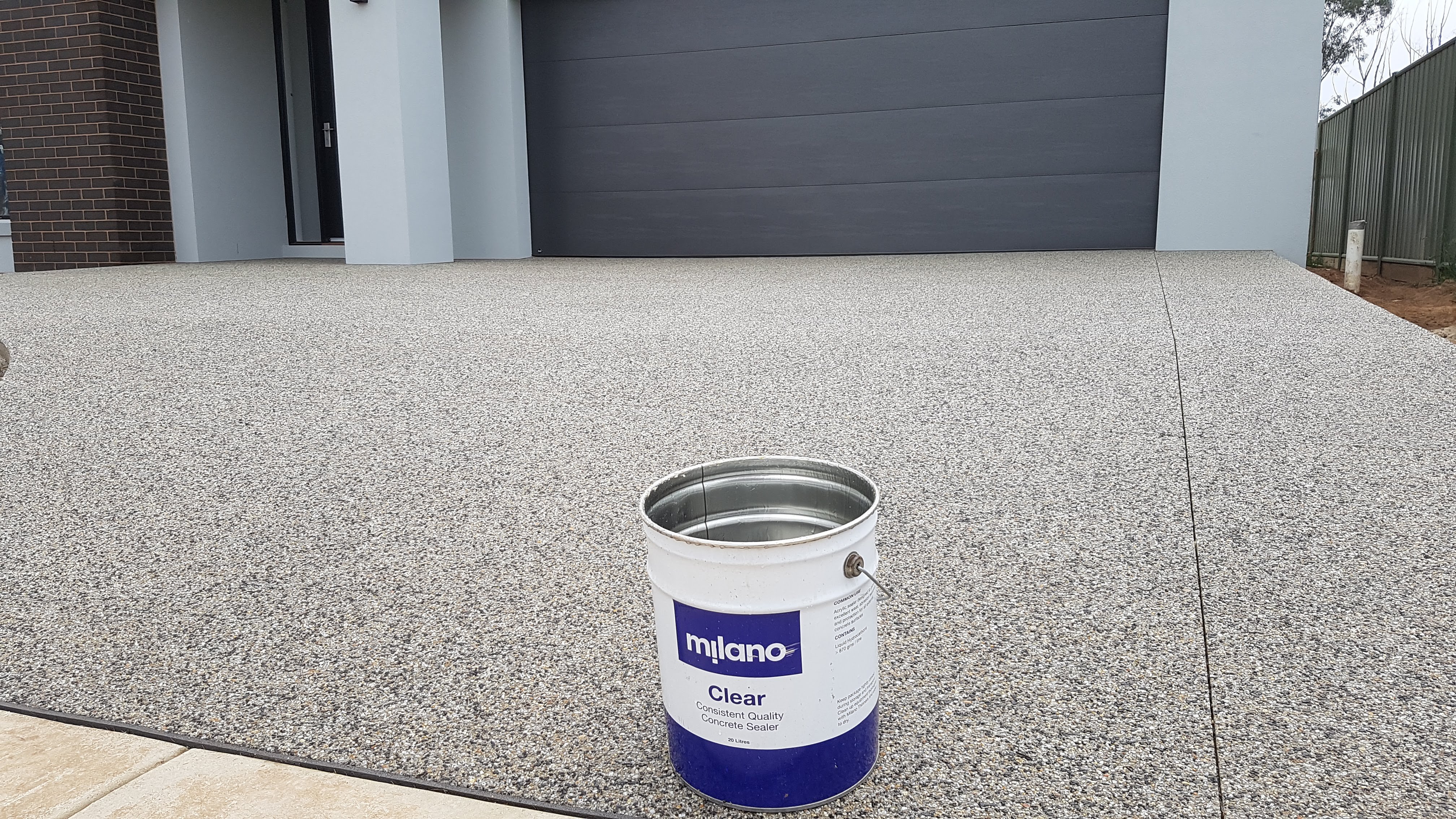
Using a clear or coloured concrete sealer has become a popular option for both residential and commercial purposes. Typical applications for sealers include driveways, garages, pathways and flooring. Sealers are a great way to improve slip resistance, protect the concrete surface from weathering and improve ease of cleaning.
However, concrete sealers can fail for a variety of reasons and are rarely resolved by simply applying another coat.
In this blog post, the concrete experts at Allcon take a look at some of the most common problems experienced with sealers as well some handy tips for how to fix these problems.
Problem: white or cloudy patches under the concrete sealer
This is generally caused by excess moisture on the surface of the concrete before the sealer was applied.
Solution:
To resolve this, scrub thinners into the affected areas. This will reactivate the sealer and hopefully allow the moisture to escape. Multiple applications may be required.
Failing that, a stronger reactivating solvent or MEK solvent may be required. Otherwise, the coating may need to be stripped off and reapplied.
Problem: white salt deposits visible on the surface of the concrete sealer
This is what is called “efflorescence”. These salts are produced during the curing process and are carried to the surface of the concrete by the evaporation or drying of moisture.
Water soluble salts in groundwater which permeate through the concrete under hydrostatic pressure can also be a source of powdery salt deposits. In situations where very high concentrations of groundwater salt occur, sealers can delaminate in small areas due to crystallisation of salts between the sealer and the concrete, particularly if the concrete has not been prepared correctly and the sealer does not key into the surface. This is often observed adjacent to garden beds or in situations where hydrostatic pressure of groundwater is high due to ground slope and level differences.
Solution:
These salts are usually water soluble and therefore can be removed with water. A very weak solution of 1-part Hydrochloric acid and 100 parts water will assist cleaning. Flush and scrub the area thoroughly after acid washing.
One or two coats of sealer may not prevent the appearance of efflorescent salts, particularly if there is some hydrostatic source of ground moisture which contains salts. In most cases, three or more coats will block the salts, provided the first coat has adequate adhesion.
Problem: concrete sealer is peeling off
This is generally caused by inadequate preparation or a weak concrete surface.
Solution:
Examine the back of the flaking sealer to see if there is any debris or concrete particles. If this is the case, remove all flaky material by means of a high pressure washer or vigorous scrubbing over the surface. Once dry, apply two diluted coats of sealer followed by a straight coat.
Problem: silvering flaky concrete sealer
Scratching the sealer and observing any flaking or powdery sealer usually indicates an adhesion problem.
Solution:
Resealing will be required. Stripping is advisable before resealing or using a seal repair solution.
Problem: blistering or bubbling sealer
This normally occurs when the sealer has been applied when the concrete is too hot.
Solution:
Simply knock the bubbles off the surface and apply another coat when the surface is cooler.
Need more expert advice about applying concrete sealers? Talk to the team at Allcon.
We’re a family business with over 100 years’ collective experience in concrete construction equipment. So we know all the hard truths about concrete.
For more information about concrete sealers, simply click here to get in touch with us today.
